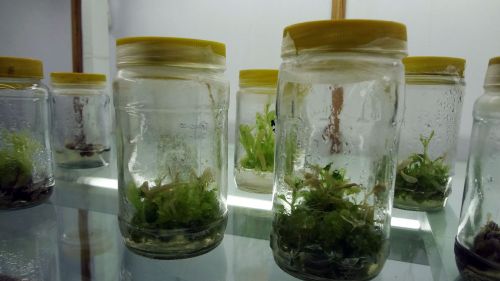Breeding Crops for Climate Resilience: Visions from Haiti, Costa Rica, Uganda, Malawi, and Senegal

This blog is about the disruption and impact COVID-19 has had on climate change and food systems around the world.
This year has been rocked by unprecedented global turmoil. As disruptive as 2020 has been, the havoc raised by COVID-19 is a sneak peek at what’s coming as climate change distorts food systems across the world. The culmination of a global economic slowdown, COVID disruption to food systems and unprecedented climatic disasters will threaten food security for millions. The burden will not be shared equally: the global south will be challenged first and the hardest. As a global community it’s imperative that we tackle the worst consequences of climate change head-on before local and regional food supplies are destroyed.
Just a few months before COVID-19 hit, we launched the Feed the Future Innovation Lab for Crop Improvement (ILCI). From the outset we sought to think differently about supporting crop improvement research: we partner directly with National Agricultural Research Institutes (NARIs) to co-develop tools, technologies and methods in crop improvement that address a variety of challenges. Our goal is to support NARIs as they define their own priorities and drive advancement to breed resilient crop varieties that stand up to some of the greatest threats to food security — pests, diseases and, of course, climate change. We also aimed to shift the focus of crop improvement beyond productivity gains; improving productivity of crops through plant breeding is important to ending hunger but is not enough. At ILCI we prioritized cross-cutting themes of gender, youth, nutrition and diversity and inclusion in setting our agenda, and used these as major selection criteria in our request for application of our Centers of Innovation (CoIs). Interwoven into these themes, climate resiliency emerged as a top priority.
Plant breeders face a complex task: how to breed preferred traits into target crops for anything from higher yields, tolerance to heat and drought, more micronutrients, storability, ease of processing, product quality, optimal size, texture, taste, and countless other variables prized by farmers, processors and consumers of the plants we need to survive. The process is meticulous and takes years to complete, with no assurance of success. Yet breeders persist, because the cost of failure is too great.
This week we announced four CoIs in Costa Rica/Haiti, Malawi, Uganda and Senegal. Each CoI will strengthen breeding capacity for crops essential to food security in each of their local contexts. What we heard from all these partners was palpable concern about the looming threat faced by climate change.
Climate resilience goals for breeding appear simple enough: if crops can survive devastating conditions, from droughts and severe heat to storms and humidity, then smallholder farmers will be able to deliver the food that people need. But to do it effectively, we must look beyond just the plants and consider the social context in which they are being bred, grown, processed and consumed — who grows them, and what do they need not just to coax a plant from the earth, but to build a livelihood; who processes them, and what will make their lives better; who ultimately eats the food, and what do those people really need for a nutritious, healthy life for themselves, their families, and their communities. This is where supporting CoIs has potential for impact by integrating contextual priorities with tools, technologies and methods that enable selection for climate relevant traits like drought tolerance, heat stress and tolerance to flooding.
In Latin America and the Caribbean, farmers contend with droughts, plant disease epidemics and pest outbreaks across highly diverse cropping and climatic conditions. The CoI in Costa Rica/Haiti is prioritizing climate smart and stable varieties of common bean, sorghum and sweet potato that can grow across a broad range of semi-arid and sub-humid environments. These centers will infuse resources into the NARIs as they make decisions important to them. Like all of the CoIs, they are committed to gender responsiveness, diversity and inclusion as they chart a new course.
Other CoIs across sub-Saharan Africa are taking their own powerful approaches to answer questions relevant to regional needs. The Malawi and Uganda-based CoIs are confronting climate conditions that threaten food security in East Africa. By focusing on finger millet and sorghum as key crops offering major sources of carbohydrates and micronutrients for rural communities, CoI leaders in Uganda see genetic improvement as the most efficient and cost effective means of addressing the devastating droughts of the region. Comparably, the Malawi-based CoI is prioritizing the development of drought tolerant varieties of cowpea that will enhance farmers’ resilience to climate change and improve the sustainability of cropping systems. Similarly, in West Africa, plant breeders recognize that the region will experience significantly warmer and drier climate conditions over time, threatening the sustainability of agricultural systems. The CoI in Senegal will lead a regionally coordinated approach to accelerate genetic gains in sorghum, pearl millet and cowpea.
We support NARIs to identify the relevant climate challenges experienced nationally and drive crop improvement to solve them. Looking for optimism in dark times, we are hopeful the current convergence of crises may give us an opportunity to build back better, taking climate change seriously in setting priorities for crop improvement.